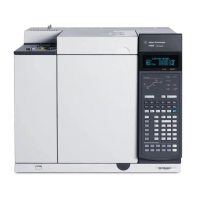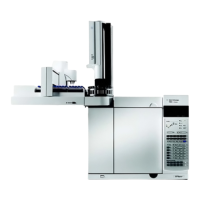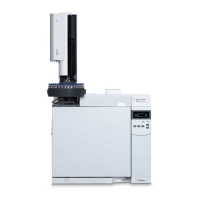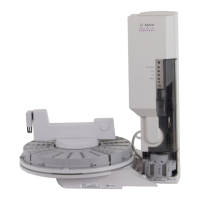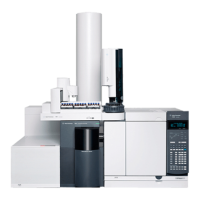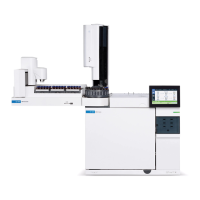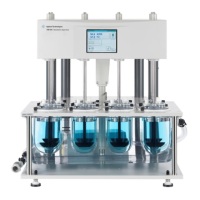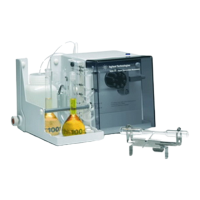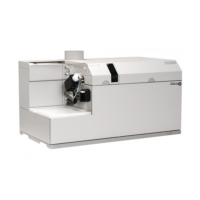194 Advanced Operation Manual
5 Detectors
Changing from a ceramic bead to a Blos bead
When you turn the NPD off, the GC remembers the bead
voltage used and applies that voltage when the detector is
turned back on. If you have changed from a ceramic bead to
a Blos bead, this voltage will be too high and may damage
the new bead.
To avoid this, reduce the voltage to the ceramic bead to 0.5
V before turning the detector off. When it restarts, the lower
voltage will be applied.
Selecting an NPD jet
Open the oven door and locate the column connection fitting
at the base of the detector. It will look like either a capillary
optimized fitting or an adaptable fitting.
• If you have an application that tends to clog the jet, select
a jet with a wider tip id.
• When using packed columns in high column- bleed
applications, the jet tends to clog with silicon dioxide.
For capillary optimized fittings, select one of the following
from Table 51.
The Blos bead is more delicate than the ceramic beads, and may be
distorted during shipping. Before installing a Blos bead, verify that it
is centered and adjust it if necessary.
Capillary optimized fitting
Adaptable fitting
Detector fitting
Adapter
Tabl e 51 Jets for capillary optimized fittings
Figure 3 ID Jet type Part number Jet tip id Length
1 Capillary with extended jet
(recommended)
G1534-80580 0.29 mm (0.011 inch) 51.5 mm
2 Capillary G1531-80560 0.29 mm (0.011 inch) 43 mm
3 High-temperature G1531-80620 0.47 mm (0.018 inch) 43 mm
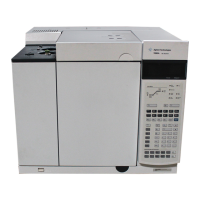
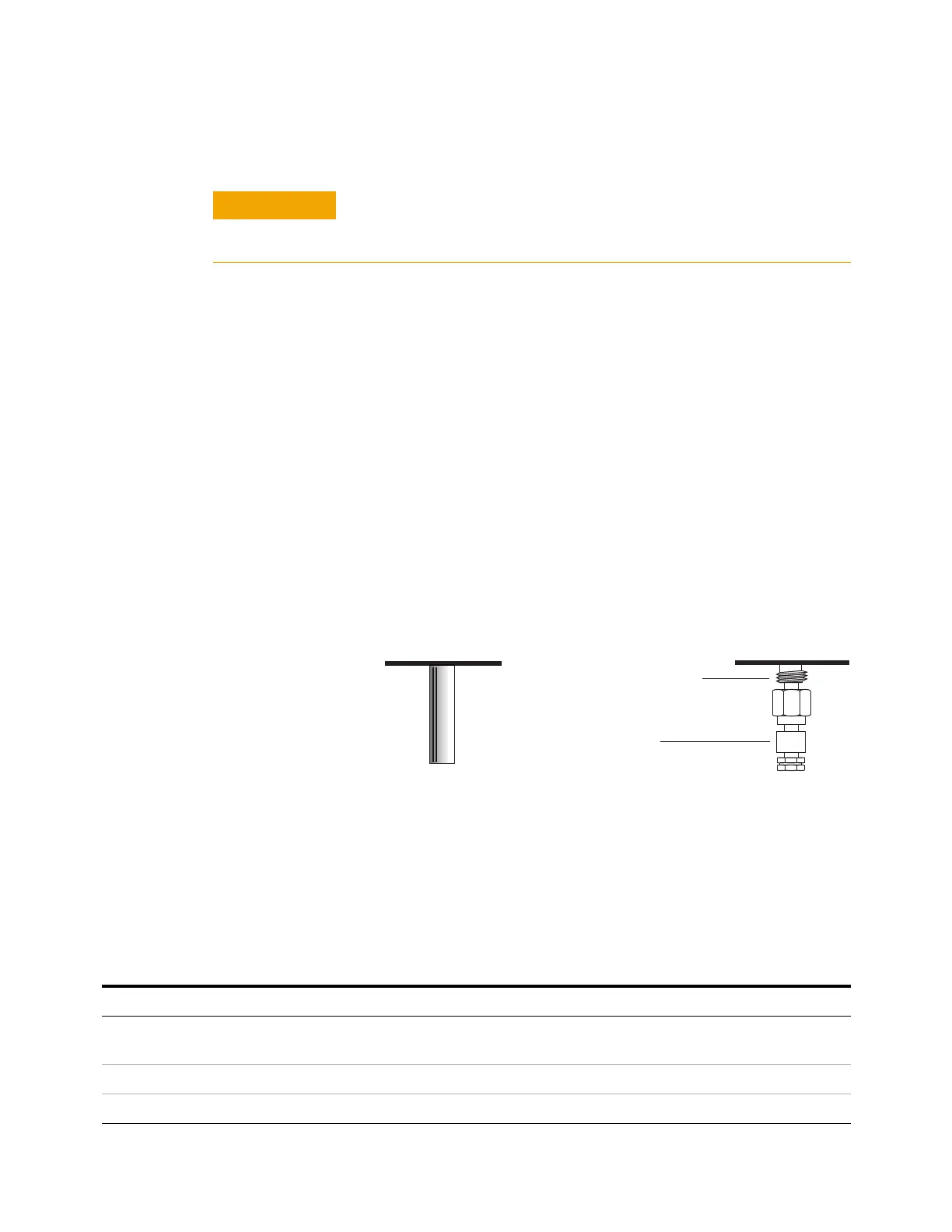